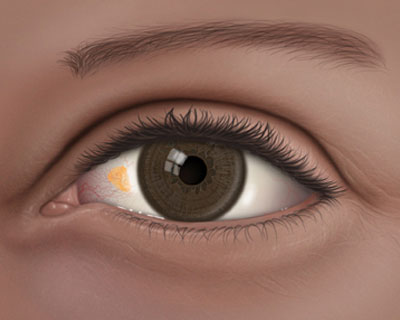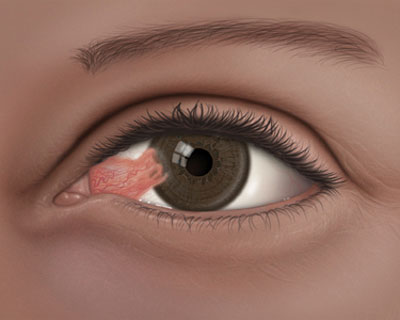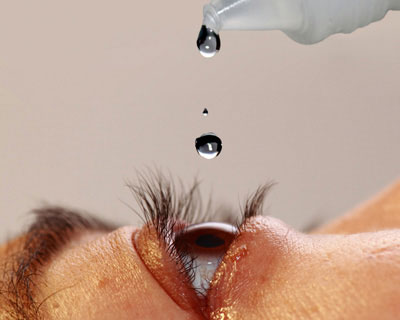Six Things To Know about Pinguecula and Pterygium
Their names may be unfamiliar and unusual-sounding, but pinguecula and pterygium are fairly common eye conditions.
A pinguecula (pronounced pin-GWEK-yoo-la) is a yellowish patch or bump on your eyeball, similar to having a callus on your skin. It is when changes to the eye’s conjunctiva–the thin, filmy membrane that covers the white part of your eye–appear as a yellowish deposit of protein, fat or calcium.

A pterygium is a wedge-shaped growth of fleshy tissue on the white of the eye. This growth will eventually extend over the cornea. It can remain small, or it may grow large enough to become uncomfortable or to interfere with vision.

Pinguecula and Pterygium Basics
- As a yellowish bump in your eye, a pinguecula most often appears on the side of the eye closest to the nose.
- Pinguecula can sometimes develop when your eye is chronically irritated from something.
- A pinguecula can become a pterygium, growing onto the cornea and blocking vision.
- Pterygium is also known as “surfer's eye” or “farmer's eye.” This is because people who spend long hours in the sun or in dusty, dry conditions are at risk for developing this growth.
- A pterygium can be surgically removed if it is causing eye irritation or affecting vision. A possible risk of pterygium surgery: developing a refractive error called astigmatism (causing blurry or distorted vision).
- Even if a pterygium is removed, it can grow back. The rate of recurrence is between 30 and 40 percent, and is more likely among people under age 40.
Top 3 Ways to Prevent Pinguecula and Pterygium

- Protect your eyes as much as possible from sun exposure with wraparound sunglasses.
- Keep your eyes protected in dry, dusty conditions with wraparound glasses, goggles or other protective eyewear.
- Lubricate your eyes as often as possible in dry conditions by using artificial tears.